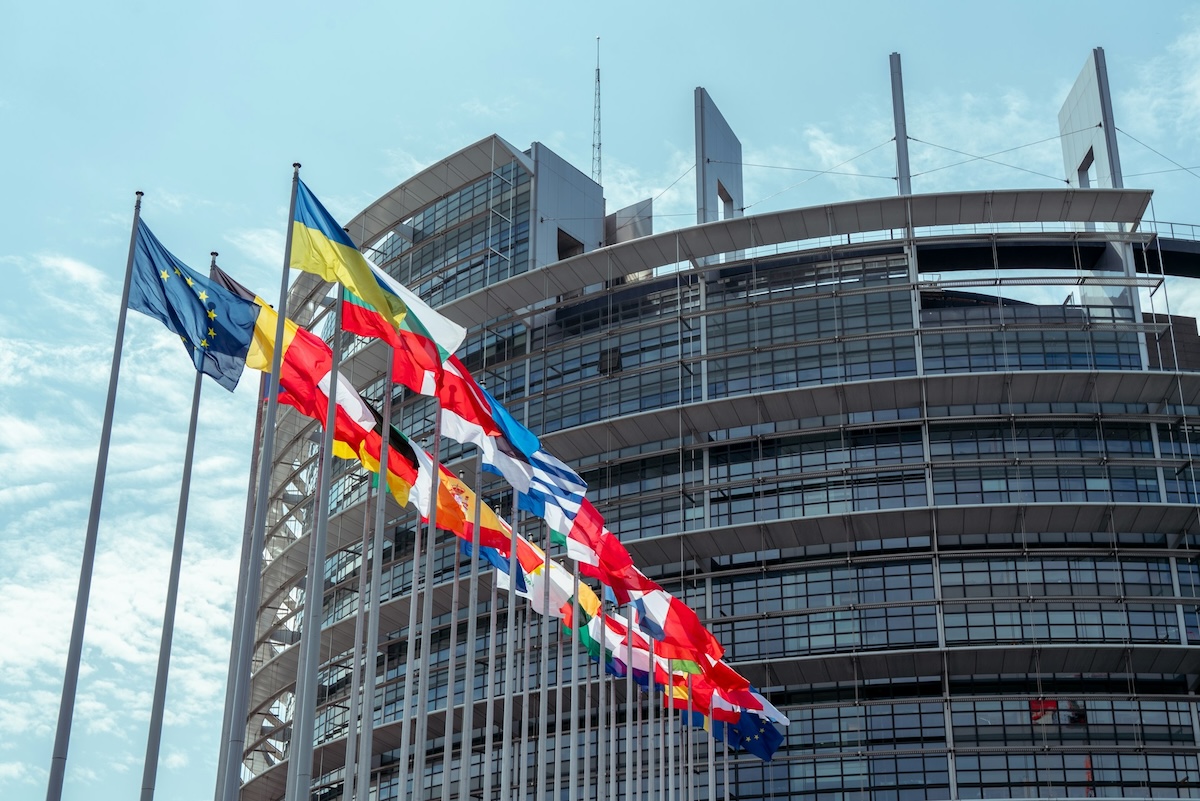Show Up! 15 Tips to Avoid No-Shows at Events

Skift Take
No one in the event industry likes no-shows. Yet this awful plague affects all types of events, small or big, free or paid, popular or fairly new. Here is your .

I used to plan free events. If you’d asked me what I hated the most about it, I’d answer no-shows. They make you feel like a teenager spotting a huge pimple just before getting dressed for prom night.
A no-show is to #eventprofs what kryptonite is to Superman, you want to stay away from it.
Yet it keeps happening. No matter how easy it has become to communicate with our attendees, the advances in technology and the comprehensive ticketing services we have available.
This is an intricate matter, therefore this post is going to be quite long and detailed. Bookmark it for future reference.
Having the Right Approach to Solve the No-Show Plague
I believe we should not be fatalist about no-shows. I also believe we should not blame attendees for not turning up at events. Such approaches just increase the chance to have the same problem at your next event.
The worst attitude you may have in tackling no-shows is to think it is not your responsibility to decrease them. You are effectively denying reality. And reality is some people will not turn up.
The right approach to curing your event from the no-show virus is to acknowledge that the problem exists, understand the dynamics that foster the virus and coming up with a plan to repel it.
As you have a plan B, C or D for every aspect of your event, you should have one for no-shows.
Just remember that your objective is not to force attendees to show up but to get them to update their RSVP on time so you can take actions to allocate that free space.
When Do No-Shows Happen?
There could be a number of reasons why no-shows happen. Thoroughly understanding why we don’t turn up, will help to better communicate with attendees.
Plans changed. This is probably the most popular reason why we end up not attending an event even if we committed to. My calendar changes all the time and so does yours. What was 100% sure ten months ago, may not be still feasible today. It’s just the way it is.
Excitement Dropped. If you are good at your marketing, you will probably excite prospects to the stage that they reserve a ticket. The thing is that if you are not able to keep that excitement going, that feeling may soon navigate away.
No Money Involved. Whether we like it or not, money is a big deterrent and motivator. Free events are plagued by no-shows as money is not part of the process.
Sponsor/VIP/Media/Partners Tickets. Tickets allocated to these categories go often times unused. These guys are busy bees and while they say they would be there, probably they won’t. Generous sponsor packages usually mean large patches of empty seats.
You Are Not the Only One Upset by No-Shows
The thing is that that pimple-like anger is not only felt by you, the event professional. Several groups of stakeholders share the pain with you.
Unfortunately such frustration will then be addressed to you as you should have done something about it. Those who will be upset by your lack of no-shows contingency planning will usually include:
– Other prospects who wanted a ticket. These guys will be pretty upset. You told them no tickets were available and they learned empty seats were all over the place. Not good.
– Sponsors. You promised them a full and vibrant room and look at what we got, hundreds of unclaimed goodie bags.
– Performers. While I like to think things have changed since this post, the norm is that speakers or performers hardly get paid at small/medium sized events. They get drawn in by the promise of new contacts in the audience. I can understand why some speakers comply but if the room is semi-full because of no-shows, you’ll have a tough nut to crack.
– You or your boss. Empty seats in several instances will mean money loss. Trust me, that is not something you (or your boss) will love.
Be Careful With Tickets
Before I share some insights on how you can make sure the room is always crammed with attendees, let me give you a word of warning.
In most countries, when you sell a ticket, that’s it. You can’t sell it again. If you have numbered seating and you sell a space twice, you are probably going against the law.
That does not mean the story is over. There are still tactics you can adopt to fill in the room but selling a ticket twice is not one of them.
The majority of the tactics below are applicable to free tickets or tickets allocated to different stakeholders as sign of goodwill. In fact these tends to be the culprit in spreading the no-shows plague in events around the world.
Before you implement any of the tactics below, make sure to play by the rules!
15 Tips to Minimize No-Shows at Events

1. Analyze Who Is Not Showing Up
Whenever I get the no-show question, I always ask if the event planner knows who is actually not showing up. I get a lot of nos.
There is no way you are going to minimize no-shows without knowing your stats.
Who is not showing up? What ticket type did they purchase? What demographic do they belong to? What group of stakeholders do they belong to?
Knowing all of the above will direct your marketing efforts towards more reliable attendees and will also give an indication of the allowances you can make to key stakeholders (partners, sponsors, VIPs, media, etc.)
2. Master Attendee Communication
One of the reasons why I was getting constant no-shows at my free events was lack of adequate communication.
If you take responsibility of no-shows and you are determined to solve the issue for good, you should let your attendees know. A few days before the event I clearly asked attendees to let us know if they were not so sure about attending. I also mentioned that there were several attendees who actually were desperate to get a ticket.
This usually makes attendees more proactive in updating their RSVP. In some instances it is a good idea to call them if there is urgency to free up space or demand is really high.
3. Set up a Standby List
I don’t understand events without a standby list. I don’t. Airlines are a great example of real estate optimisation in how they manage standby passengers.
No matter how full you think your event will be when you launch in 12 months time, set up standby list arrangements from day one.
Proper ticketing and registration systems do offer standby options. Having a list combined with aggressive communication will fill up the room. Guaranteed.
4. Last Minute Tickets
Want a tip on how to use social wisely? Create specials for tickets that become available at the last minute. Make sure all those who wanted a ticket are aware of new tickets availability. Add a discount and keep selling them, even during the event.
Registration closing a week before the event is good only to demonstrate how inflexible the event management is.
5. Stimulate Secondhand Trade
I believe you should be a connector for those who purchased a ticket and honestly can’t make it. Transferring tickets to someone who wants to attend is a win-win.
There are several websites such as SeatGeek or Seatwave that offer more structured approaches to tickets exchange.
Be careful with how you stimulate secondhand trade. There are regulations that differ in every country, also consider that scalping is by no means dead.
I believe that a low-key approach, eg. a link on your website saying ‘Can’t make it to the Event?’ and clear instructions on how to transfer tickets will give you enough control over what happens.
6. Consider Media Giveaways
If you find yourself with the certainty of a large percentage of attendees not showing up, you can involve media to give away those tickets.
For smaller events you can consider bloggers and influential social outlets, for larger gigs radio is always a good one.
This is a great way to fill the room up and get additional PR to make sponsors and performers happy.
7. Stimulate Attendees Referrals
If you find yourself with a number of tickets who became suddenly available and you do not have a standby list in place, asking your attendees to refer someone could work a treat.
Attendees may surely have peers who are interested in the topic of your event. Leverage their social networking activity to fill up those empty seats and possibly offer rewards/discounts if money is involved.
8. Charge Them Later
This is one of my favourites. If you only register with free tickets, you may consider charging only attendees who do not turn up.
Add to your terms and conditions that the ticket will be free only for those who attend. If they don’t they will incur a payment.
No event is free. There is always a great deal of resources, time and energy invested. Not showing up without updating your RSVP is disrespectful, therefore the tactic above is completely acceptable.
Also consider that the objective is to get no-showers to update their RSVP so you can take action and allocate the free seats.
9. Raffle for Charity
If you don’t want to be bothered with secondhand trade and constant email communications, you could give away last minute no-shows in return for donations.
This way you will be able to fill up the seats and do something good. If your event is in demand then this is often times a great way to solve the problem.
Also great for no-profit and charity events.
10. Mandatory Online Check-In Before The Event
What do you think about getting attendees to check-in online 24 hours before the event? I’ll tell you what I think: it’s brilliant!
This process not only gives you a definite indication of who will not make it but will also speed up on-site registration.
Event mobile apps can help with that.
11. In Person Pick Up
One thing for sure is that online is making us lazier. If you run a free event, it does not cost me anything to click on ‘Get Tickets’ and then completely forget about it.
What about getting your prospective attendees to think about what they are about to do? What about getting a taste of their real motivation?
Get them to collect the tickets in person, as we used to do in the olden days. If they don’t, then you can allocate your tickets to someone else with ease of mind.
This is by no means exclusive to free events, have you heard of the Bruno Mars Act?
12. Set an Expiry Date
Who said that tickets cannot be perishable? In a social media world, knowing the exact number of no-shows 30 minutes before your event starts can still give you enough time to allocate those tickets.
You can use registration time as the cut off date for the ticket validity. If attendees do not redeem their ticket before your registration time, then you will allocate ticket to someone else.
Of course be careful with what ticket rules you have to respect.
13. Watch Your Real Time Analytics
One of the trends for this year is real time analytics. How can you use technology to minimize no-shows?
That is fairly simple if you are constantly monitoring the response to different ticket types, on-site registration and online check-ins. Technology will help you to understand if the volumes of people showing up is adequate to fill up the room.
There are a number of communication tactics that you can adopt to respond to no shows but they are meaningless if you do not constantly monitor the visitor flow.
14. Pacing Ticket Release
One of the most trivial mistake I see when marketing events is to release too many tickets too soon.
You have to be wise in how you create the feeling of scarcity for your event. Getting hold of a ticket for your event should always test the motivation of your attendees and finding the optimal release pace is key.
On the other hand, I’ve seen several event marketers almost threatening the attendee on their ticket description. This is not what I am discussing here. I want you to create the appetite, not to make them scared of attending.
15. Keep The Excitement Going
One of the most common scenarios of no-shows involves early birds. If in fact I obtain a ticket too soon, that excitement I feel when getting it usually disappears a few months later when the actual event takes place.
Keeping the excitement going is paramount to make attendees feel motivated at all times. Establish a relationship with them immediately via social networks, email or newsletters. Let them know that the purchase of a ticket is just the start.
They will also feel they could talk to you if they need to update their RSVP. In fact sometime people are actually embarrassed to say they won’t make it. Keeping a constant relationship with them will increase your RSVP update conversion rates.
In Conclusion
I hope this mini-guide inspired you to better combat the plague of no-shows at events.
Of course the issue is very complex and there are tons of scenarios and contexts to take into account. Yet I believe this is a comprehensive starting point for those who committed to reduce no shows at events.
All the tips in this post have been largely inspired and suggested by those who contributed to this discussion on empty seats at Olympics in Summer 2012. If you needed further proof that our 170,000 member community kicks ass, there it is!




